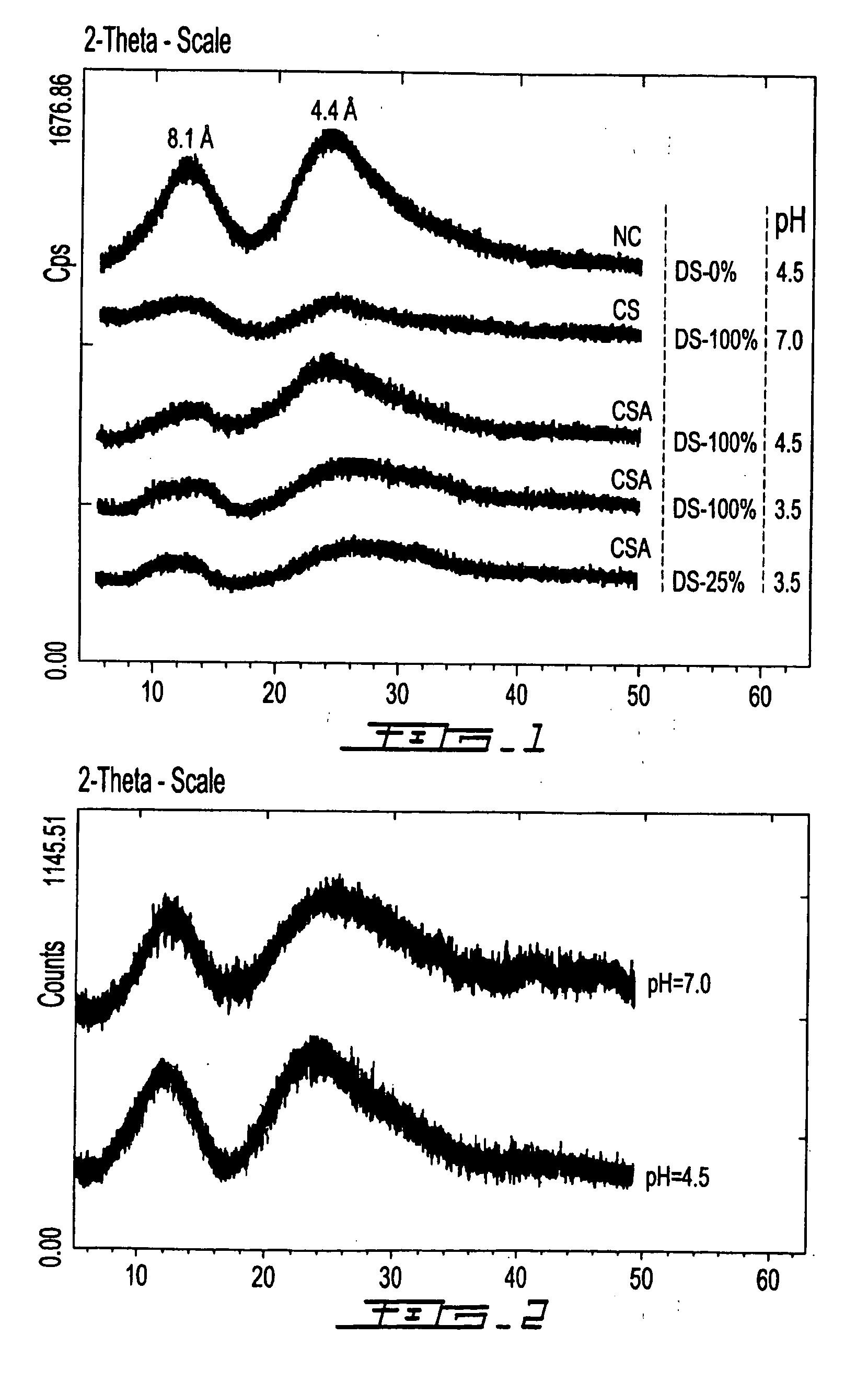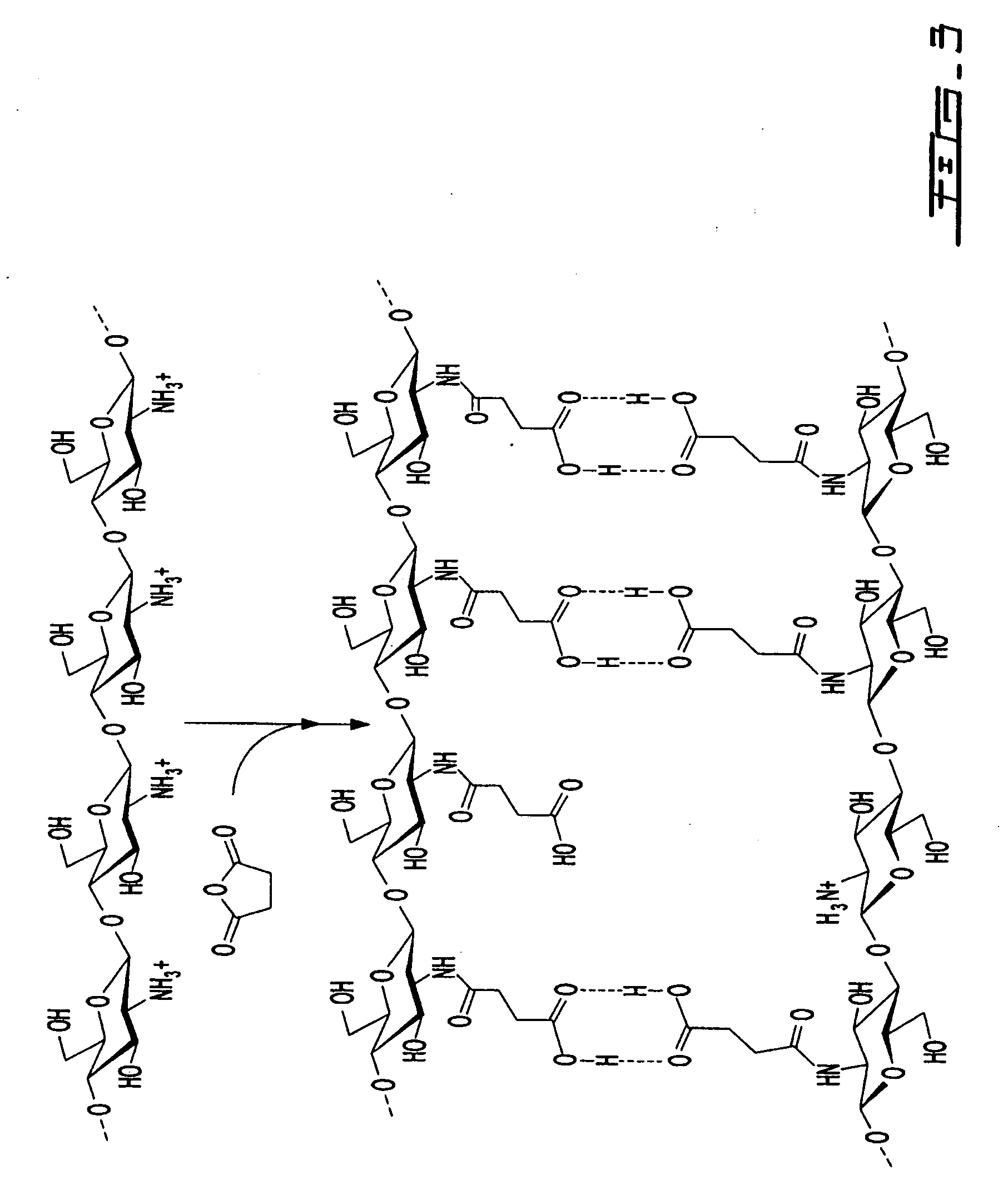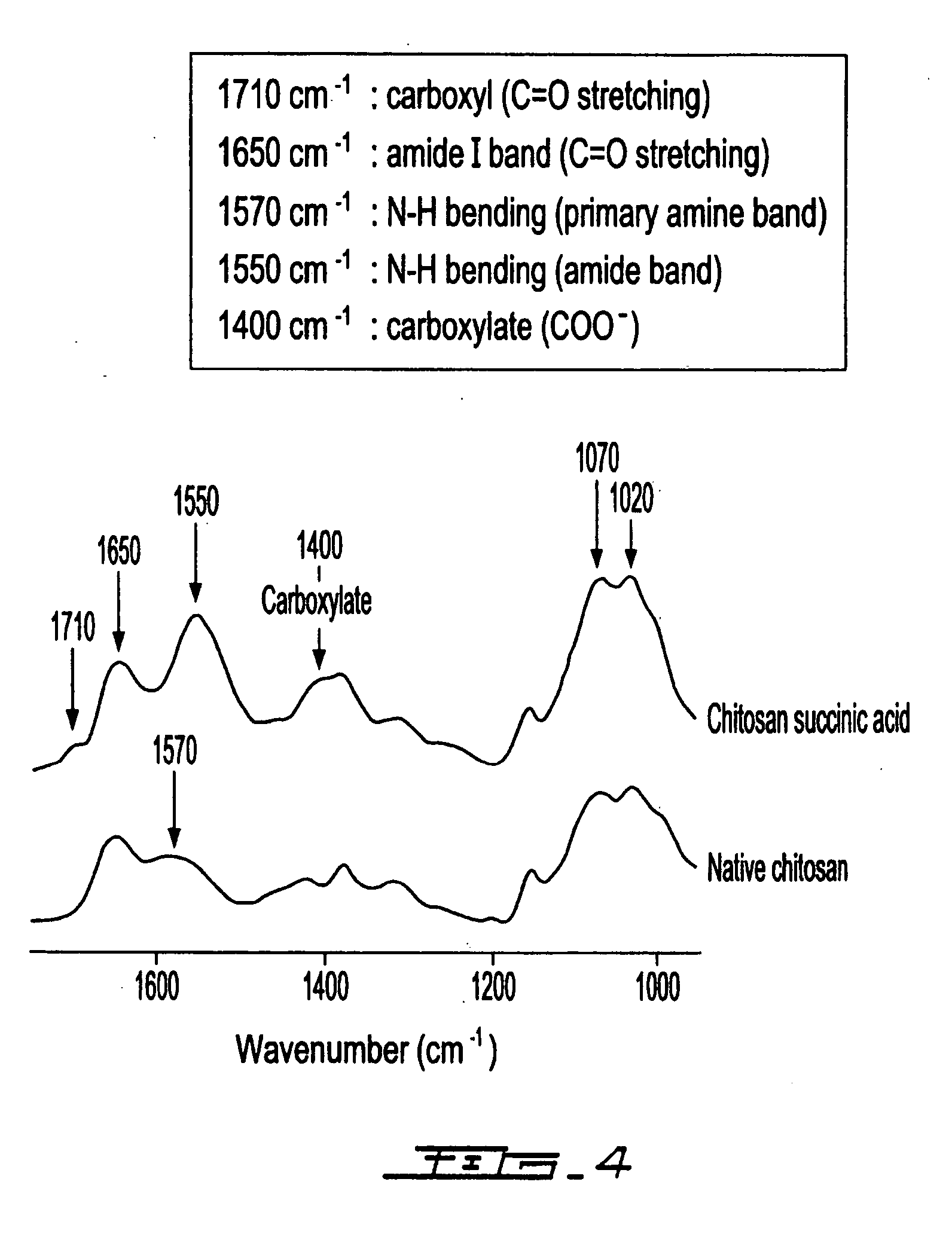Biocompatible polymeric matrix and preparation thereof
a polymer matrix and biocompatible technology, applied in the direction of pill delivery, capsule delivery, non-active ingredients of pharmaceuticals, etc., can solve the problems of short half-life of biopharmaceuticals, unstable gastrointestinal tract of many bioactive agents, and delivery of bioactive agents where needed,
- Summary
- Abstract
- Description
- Claims
- Application Information
AI Technical Summary
Problems solved by technology
Method used
Image
Examples
example 1
Monolithic Drug Controlled Release Dosage Forms Based on Chitosan Succinic Acid Conjugate
[0065] Chitosan succinic acid was synthesized at pH 4.5 and at temperature 60° C. for a minimum of 3 h. A quantity of 20.0 g chitosan was dissolved in 900 mL of water containing 11.5 mL of lactic acid (or acetic acid). When the chitosan is completely homogenized, an amount in the range of 0.5 -20 g of succinic anhydride (dissolved in methanol, ethanol or acetone just prior to use) is slowly added. After the reaction, the final pH of solution is adjusted to 4.5 and the volume is completed to 1 L with distilled water. Similarly, chitosan succinic acid can be obtained by varying the conditions of starting chitosan whiting (1-20 g chitosan dissolved in 900 mL of organic acid) or whiting pH of the medium (pH 3.5-6.5).
[0066] To obtain the powder, the solution was precipitated in methanol or ethanol and dried 3-4 times in acetone. Alternatively, the powders can be obtained by using a spray-drying pro...
example 2
Succinylalginate Used as Matrix for Drug Controlled Release
[0070] The succinylalginate was synthesized at pH 8.0-10.0 and at temperature 60° C. by treating alginate with succinic anhydride for a minimum of 3 h. Indeed, a quantity of 20.0 g of alginate sodium salt was dissolved in 900 mL of distilled water containing 1.5% of NaOH. When the solution is completely homogenized, an amount of 0.5-20 g of succinic anhydride (dissolved in methanol, ethanol or acetone just prior to use) is slowly added. After the reaction, the final pH of solution is adjusted to 4.5 with lactic acid or HCl (0.1-1.0M) and the final volume is completed to 1 L with distilled water. To obtain the powder, the solution can be precipitated and dried in acetone or by spray drying.
[0071] With the native alginate (non-modified) as excipient, the tablets are easily swollen, adhesive and released of the acetaminophen within 2-3 h, whereas the succinylalginate (DS˜20%) tablets are degraded gradually and a long release ...
example 3
Succinylethylcellulose as Matrix for Drug Controlled Release
[0072] The succinylethylcellulose was synthesized as described to succinyl alginate (Example 2). With the native hydroxyethylcellulose (HEC, non-modified), the tablets were rapidly disintegrated and the acetaminophen released within 1 h, whereas the succinylethylcellulose (DS˜20%) tablets are gradually degraded and a long release time (more than 20 h) was observed for matrices with 20 and 40% of drug loading (FIG. 9).
PUM
| Property | Measurement | Unit |
|---|---|---|
| Fraction | aaaaa | aaaaa |
| Fraction | aaaaa | aaaaa |
| Biocompatibility | aaaaa | aaaaa |
Abstract
Description
Claims
Application Information
 Login to View More
Login to View More - R&D
- Intellectual Property
- Life Sciences
- Materials
- Tech Scout
- Unparalleled Data Quality
- Higher Quality Content
- 60% Fewer Hallucinations
Browse by: Latest US Patents, China's latest patents, Technical Efficacy Thesaurus, Application Domain, Technology Topic, Popular Technical Reports.
© 2025 PatSnap. All rights reserved.Legal|Privacy policy|Modern Slavery Act Transparency Statement|Sitemap|About US| Contact US: help@patsnap.com



